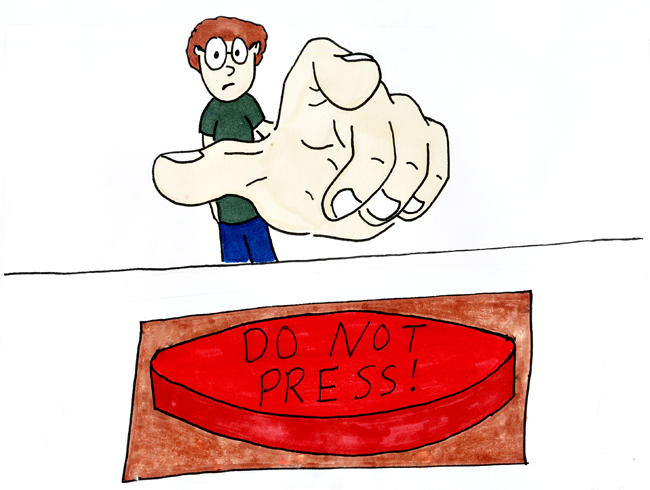Don’t read the next sentence.
If you’re reading this sentence, the “just say no” campaign coined by the D.A.R.E. program may not have worked for you.
D.A.R.E., the international substance abuse prevention program, teaches drug-abstinence to students starting in fifth grade. As part of the program, which was founded in 1983 as part of the war on drugs, officers trained in child development education teach kids to use the “just say no” method to resist peer pressure. While research supports the success of a variety of psychological techniques used in the D.A.R.E. program, real life results leave something to be desired.
Numerous studies attempted to measure the effectiveness of D.A.R.E. and to determine whether it’s helping win the war on drugs, but it’s difficult to say how well the program works. The most common technique used to evaluate D.A.R.E.’s success is to give students surveys about their drug habits before and after they complete the D.A.R.E. program.
A paper combining the results of several of these studies did not find any measurable difference in students’ drug use over the course of the program. Other programs, particularly those requiring students to act out different scenarios, fared better — but not by much. It’s unfortunate that D.A.R.E. isn’t more effective, especially given that the program uses many techniques based on tried-and-true psychological principles.
For example, the program asks students to sign a “pledge” not to use drugs. The psychological principle of consistency, established in a 1966 research paper, suggests people want to remain consistent with their past choices. Ideally, if a person signs a pledge not to do drugs, they’d be more likely to abide by this commitment than if they hadn’t.
The D.A.R.E. program also relies on an appeal to authority. A 1974 study found that people are more likely to obey a request from a uniformed guard than from someone in street clothes — an effect that lasts even after the guard is out of sight.
Although various techniques that exist within the D.A.R.E. program work in controlled experimental settings, the complexity of everyday life cannot be duplicated in a lab. The D.A.R.E. program effectively increasing drug awareness, but the program falls short. In fact, multiple studies have found that the D.A.R.E. program has no statistically significant effect on student drug use.
Perhaps, the program’s emphasis on the negative might be why D.A.R.E. hasn’t made much of a dent in drug use among America’s youth.
People are often curious about what they’re told not to do. Don’t press that red button. Don’t date that tattooed guy with the motorcycle. Don’t do drugs.
The D.A.R.E. program may have good intentions, but the war on drugs cannot be won through the use of program that has proven ineffective.





















